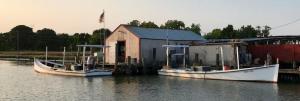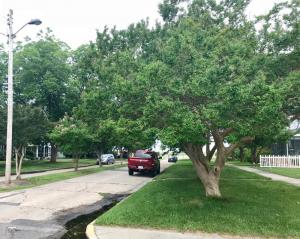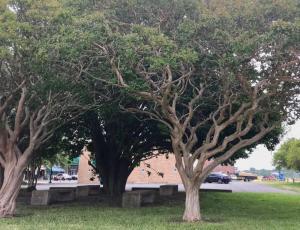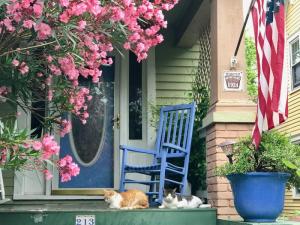A lower Chesapeake loop of four sweet water towns
"Virginia is for Lovers" is the tourism and travel slogan of the U.S. commonwealth of Virginia. Used since 1969, it has become a well-recognized and often imitated part of American jargon. In 2012, Advertising Age called Virginia is for Lovers ‘one of the most iconic ad campaigns in the past 50 years.’" - Wikipedia
A recent boating loop aboard Nellie Peach took us from Crisfield out through the marshes of Smith Island, across the Chesapeake to a Shangri-La-like system of creeks in the Little Wicomico River on the western shore, and then down the bay into the Greater Wicomico River and its strong menhaden influences.
There are at least four Wicomico Rivers in the Chesapeake system: three on the western shore including another off the southern shore of the Potomac River. The one most of us are familiar with is the Wicomico River on Maryland’s Eastern Shore that lies to the south of the Nanticoke River and terminates in Salisbury. Some of its headwaters rise in western Sussex County.
According to A.R. Dunlap’s and C.S. Weslager’s book called “Indian Place-Names in Delaware,” the original meaning of Wicomico may have been ‘fortified area containing houses.’ Considering that hundreds of thousands of Native Americans lived along both shores of the Chesapeake at the time of the arrival of European settlers, it’s not surprising that those explorers may have heard several places described by Native Americans as Wicomico. Many tribes throughout the region fought with one another on a regular basis, so having fortified villages makes sense.
So that’s the end of the Native American history lesson for today.
After one night in the Little Wicomico system, which definitely warrants a return visit, and marveling for another day and night at the steady comings and goings of menhaden vessels in Reedville, we took advantage of light morning winds to make a passage to the southeast to the southernmost Delmarva town of Cape Charles.
That's where we came across the love scene shown in the photograph here. It’s often been said that while Rehoboth is a beach town, Lewes is a town with a beach. Likewise, Cape Charles is a town with a beach. The love letters stood at the southern edge of the town’s fine little bay beach festooned with finely grassed dunes, white sand, and warm tidal pools at low water. The letters are constructed of various different components of Cape Charles culture, but without getting too far into the weeds on that - take a close look at the photo - suffice it to say that they add an unpretentious and joyful touch to the community’s water edge.
A unique railroad town
Cape Charles was built as a railroad town to service the railroad car ferry that once plied the mouth of the Chesapeake between Cape Charles and Norfolk - long before the first bridge-tunnel. Professional planners laid out the early 20th century town in a rectangular grid and included tree-lined boulevards, a major central park as an attractive gathering place for residents and visitors, and a commercial strip along the harbor.
The climate at Cape Charles - about three hours south of Delaware’s Cape Region - is enough warmer that it supports a variety of plant life that doesn’t survive this far north. Live oaks, and oleander that blooms in a variety of colors, are two examples. The community has also taken crape myrtles to a new level, lining its many streets with the trees, pruning many of them in a bonsai tree-like fashion, and using them for shade canopies in many parks.
There’s much more to be said about Cape Charles, which is undergoing a revival both in its commercial and residential areas. All I can say in this writing is that it is worth a visit of at least one or two days. There are a few hotels and a number of fine restaurants to add to the experience.
After our sojourn in Cape Charles, we headed up the eastern shore of the Chesapeake and motored into another beautiful waterside town, Onancock. If you see Zack or Darlene, ask them about the town they adopted after leaving Lewes a number of years back.
Onancock sits astride a small peninsula that divides the tranquil waters of Onancock Creek. Load up a canoe, kayaks or a couple of paddleboards and you can do some first-class exploring there in protected waters.
Albert and Jennifer, who met us in their vessel Azalea in Reedville, traveled with us until we left Onancock. That’s where they parted ways to head back to their home on the Rappahannock River, 15 miles or so across the Chesapeake. They went west; we headed north and a few hours later finished our loop back in Crisfield.
Crisfield, Reedville, Cape Charles and Onancock. All sweet little towns, each with its own history, but inextricably connected culturally, geographically and historically by the lower reaches of the Chesapeake. There’s so much to be explored right in our own backyards.


























































